Don't wanna be here? Send us removal request.
Text
How to Conduct a Competitive Analysis
A Competitive Analysis is a review of the competing companies in the market in order to better position our brand and product. A product’s positioning determines how we communicate and make offers to our target customers.
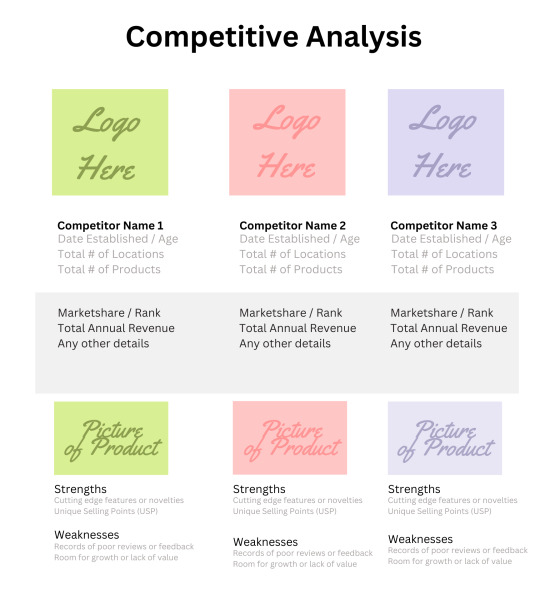
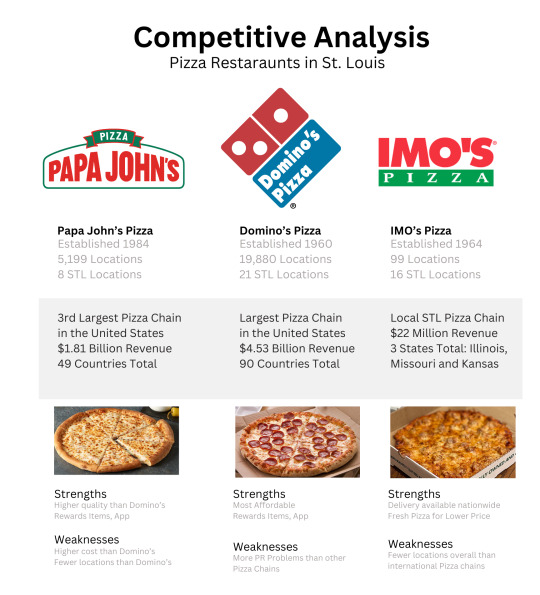
There are two types of competitors:
Direct Competitors - companies that sell the same product or service to the same target audience
Indirect Competitors - companies that do not sell the same product but their products satisfy the same need. For example: Peloton programs could be interpreted as an indirect competitor to an in-person personal training program.
In the roofing industry, my competitive analysis allows me to see how competitive each local county I was in, and every marketing channel l was considering. This was exciting because I found roofing was a far less developed industry overall than the previous industries I had competed such as Corporate eLearning.
These were some of the comparisons I made in my Competitive Analysis..
Product Marketing and Product Quality: I looked at all the companies per count and recorded their services offered, products offered (including materials they liked to use and quality of their work); followed by the structure of their offers and most importantly price structure (including price point and payment process).
This allowed me to make a product positioning map.


Website: I looked at their web copy (particularly brand voice) and USP (unique selling point they used in their messaging); user experience and site navigation of their website design (to see how easily they pushed a sale online) and finally SEO word count and back link analysis (how often are they referred to online)
Marketing Channels: I looked at for the frequency each competitor was on each different marketing channel to determine their marketing strategy.
A Competitive Analysis of digital marketing channels includes (but isn't limited to):
Socia Media Performance — their engagement on Instagram and Facebook posts, and the guality of their content
Paid Ads Performance — a keyword analysis of which website links and keywords competitors are bidding on in a Google Search; along with reverse engineering their sales funnel through joining an email list from their ad to see their customer journey to the sale.
Email Marketing - their inbox performance (which inbox did they land in), email form (simple text or multimedia), frequency, offers and content.
Google and Forum Reviews — looking at their customer experience through online reviews to see their strengths and weaknesses, how actively they use their Google Business Listing, along with how frequently they get a review and how many total.
Press releases - including the press named, the date and the backlink.
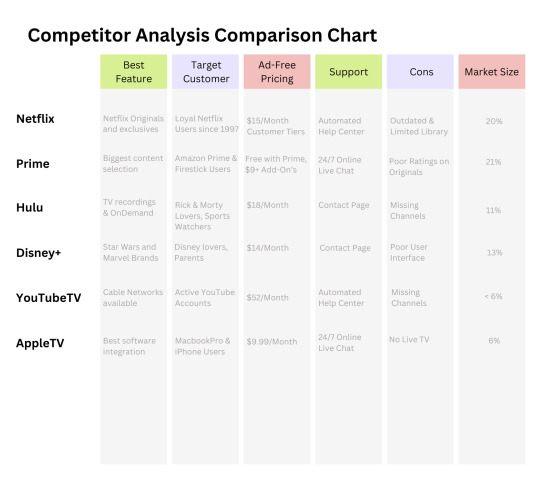
When interpreting a Competitive Analysis chart, it's important to include current marketshare, their general marketing strategy analysis, and differences in target market (there can be overlaps) and customer ratings.
The obvious thing to do with a Competitive Analysis is to assess if your pricing strategy is accepted in your industry. This can be tricky because a marketer really needs to know who is their target customer and who isn't, which is why they did a buyer persona with a lead value attached to them (what are they willing to pay, using data the company already has).
I like to look for market gaps to provide services that a competitor either does or doesn't always provide if it helps meet my profit (and doesn't significantly increase my expenses, including time expense); and market trends (to see if many competitors are moving in the same direction in decision making regarding their marketing strategy, product quality and marketing technology that they use).
A Competitive Analysis will also allow a marketer to begin to have more of a sense of where their customers congregates online or otherwise (information that became really clear in my later market research on the channels themselves).
0 notes
Text
How to Create a Buyer Persona
A Buyer Persona is a prototype of a company’s average customer, that profiles who they are and how they behave; or otherwise known as target customer (the customer a company wishes to sell more product to).
The data for the Buyer Persona is best taken from interviewing the sales team, researching the social media profiles of online testimonials, google analytics and direct feedback from customers through surveys and reviews during the after-sale.
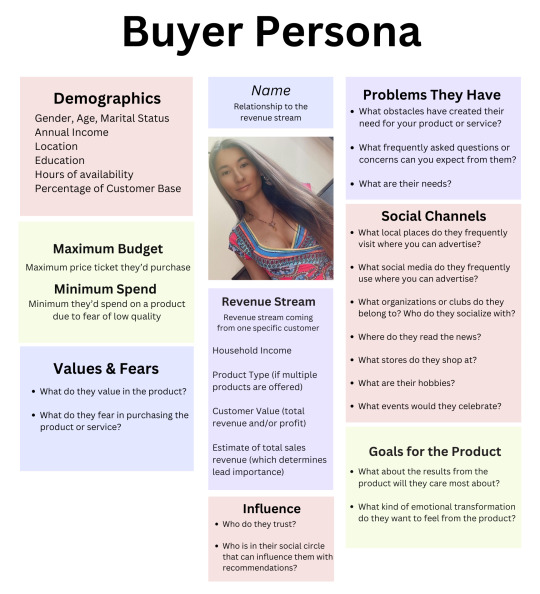
Below I have examples from a lengthy interview I conducted with my husband at the beginning of 2023 for the roofing startup, The RoofFather, we were planning to use to rebrand his already 8 year old roofing business.


Overall this exercise was helpful because:
The Buyer Persona helped us narrow down the customer’s interests which allowed us to improve brand touch points. Ad copy and sales conversations that the customer interacted with at every part of the funnel had messages tailored to the customer’s values and lifestyle.
The Buyer Persona allowed us to segment marketing campaigns to be more efficient. We learned how many marketing dollars needed to reinforce a message based on how much of the target audience spent on one channel.
The Buyer Persona allowed us to assign a lead value in the CRM for our sales associates based on the amount of profit that customer would bring in, which would improve the sales associate’s time management on sales prospectives.
The Buyer Persona helped us determine who and which locations to advertise based on where our target customer spent their time; and whom they spent their time with.
The Buyer Persona predetermined an initial key terms list for paid ads and organic key words, along with helping us find subjects for SEO (Search Engine Optimization) that our potential customer’s were more likely to read based on knowing their concerns.
The Buyer Persona allowed for better understanding of which price points communicated the most value to the customer, what kind of features could be improved upon and what kind of discounts would be most appealing to them.
While certainly not making up all of market research that can be done, the Buyer Persona consists of the necessary first steps to building out a successful marketing campaign.
After all, it’s nearly impossible to make a sale if you’re talking to the wrong person, at the wrong place or at the wrong time.
0 notes
Text
How to Build a Customer Journey
The first move to make when marketing in any new industry is to understand the sales process.
We do this by piecing together how the customer behaves and the roadmap of how the company achieves sales. The goal is to build a sales funnel by creating a Buyer Persona and a Customer Journey.
A Customer Journey maps step-by-step of all the customer’s interactions with the brand. Every singular interaction that the brand has with the customer is known as a brand touchpoint, and the various phases they experience along this journey encompass the Customer Lifecycle.
Mapping a Customer Journey, and tracking how a customer reacts to a campaign for one product or service planned out across this Customer Lifecycle, helps marketers understand product usage, buyer intent, low and high performing pieces of advertising and content, and see where the company underperforms throughout the Sales Funnel.
Once the Customer Journey Map is complete, it’s copied into a Customer Relationship Management System (CRM) and used to score how likely every lead is to make a purchase across every phase of the sales funnel. This prioritizes the sales team’s time in working with customers that are more fit to purchase the company’s product.
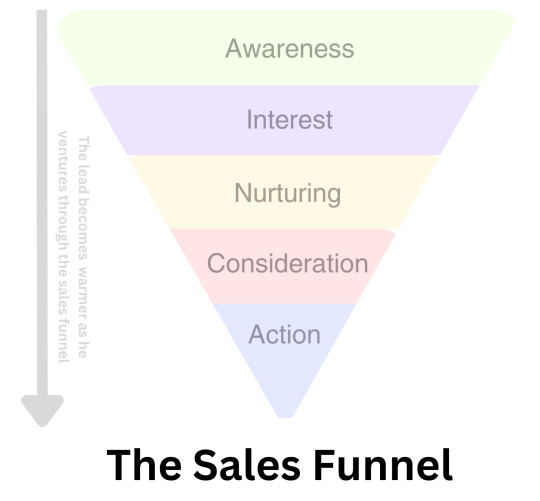
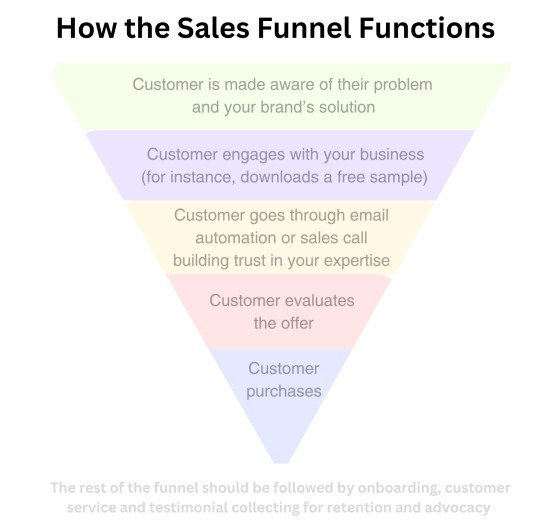
A lead becomes closer to buying across the Marketing-to-Sales Funnel as it passes through the following phases:
Awareness: The customer is made aware that the brand can solve their problem through seeing a piece of brand content
Interest: The customer engages with the brand on some level
Consideration: The customer takes steps in considering purchase such as undergoing a free trial or sales call
Conversion: The customer purchases the product
Retention: The customer returns to buy again
Advocacy: The customer becomes so loyal to the brand that they refer it to others
All phases can be broken down into further steps when necessary, but in general the customer's interactions with the brand at the top of the funnel (TOFU) are intended to generate demand for the product, the customer's interactions with the brand in the middle of the funnel (MOFU) qualify leads that are likely to buy, and the bottom of the funnel (BOFU) nurtures the lead into paid customers.
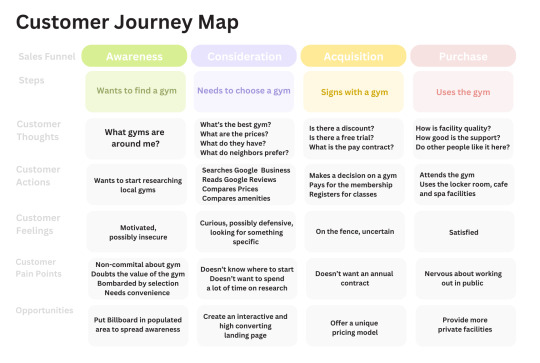
The Customer Journey Map itself reads as a linear timeline of all brand touchpoints in chronological order across these phases, and records the thoughts, emotions, fears and objections one particular kind of buyer may have at any point.
We accurately tailor our buyer to our Customer Journey Map by creating a buyer persona ("prototype" of what one particular customer may look like) with data taken from interview questions with the sales team, online research, analytics and direct feedback from customers through surveys and reviews.
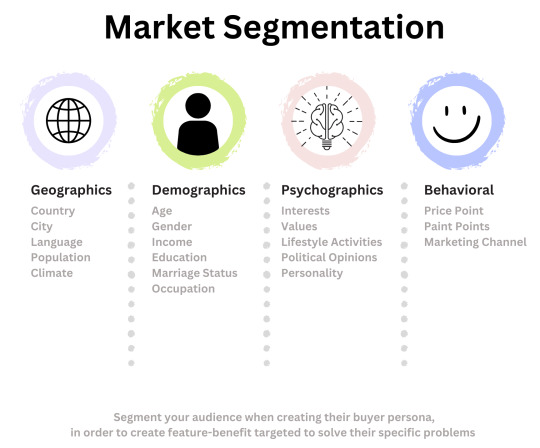
To better understand our customer we look at:
Geographics: where they live and what it's like to live there
Demographics: Age, Gender, Occupation, Income, Education
Psychographics: Lifestyle, Values, Goals, Needs, Fears
Behaviors: how they behave, expectations
I build them out using Miro, however LucidChart offers integrations, and there are a number of automated Customer Tracking tools that track customer behavior in real time including Adobe Customer Journey Analytics, Woopra and SalesPanel.
1 note
·
View note